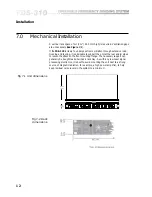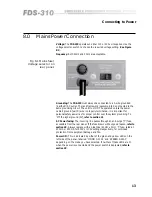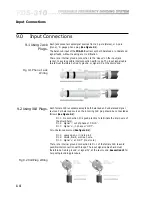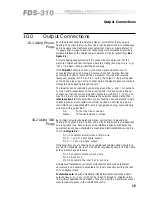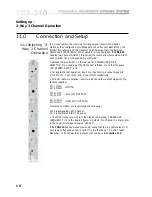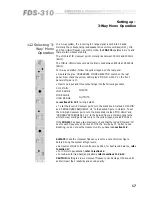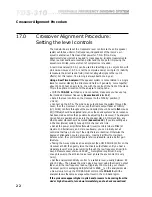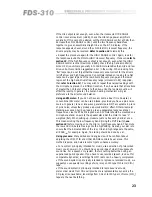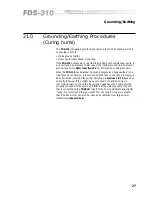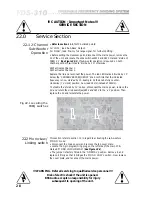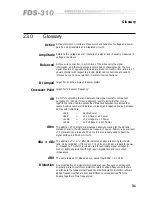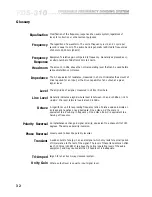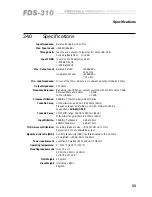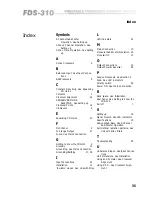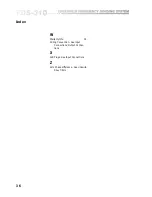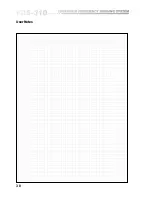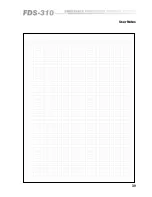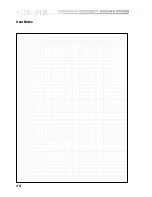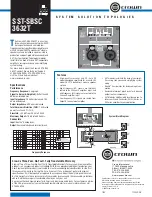
2 6
No Output
Problem:
Is the MUTE switch depressed?
Is the mains power on? (
See section 8
).
Check the connections. See Fuse failure (below).
Do you have an input signal?
Is the SIGNAL LED on?
Check the input and output connections (
See sections 9 & 10
).
Are the power amplifiers switched on?
20.0
Troubleshooting
Solution:
Solution:
Solution:
Solution:
Solution:
Solution:
Problem:
High Frequency signal from 'LOW' output
Low Frequency signal from 'HIGH' output.
Switch unit to 3-way operation.
Problem:
Low Frequency signal from CH.1 'HIGH' output
Full range signal from CH.1 'LOW' output.
Switch unit to 2-way operation.
Problem:
Sibilant, hissy HF response.
Check CD Horn EQ:
If 'EQ IN', check if required.
Problem:
Low signal level on one or two outputs.
If the effect depends on the frequency controls setting, view the panel
LEDs to conform the internal 'FREQ' switches are set correctly (
See
sections 11.3 - 13
).
Then check level control(s) and output wiring.
Problem:
Excessive Hum, Intermittent sound.
First check the connections on your input and output plugs (
See
sections 9 & 10
). Unshielded cables, improperly wired connectors and
damaged cables are the most common cause of sound system hums and
buzzes. Then
refer to sections 8 and 21
.
Problem:
Fuse Failure.
The mains supply fuse is unlikely to blow without an electronic fault
being present (
See section 8
). If the fuse blows again at switch on or
after a short interval, switch off the unit and arrange for servicing. The
internal DC fuses will only blow in the event of major fault condition. If
they are visibly blown,
DO NOT OPERATE THE UNIT
. Return it to be
serviced.
Solution:
Troubleshooting
Summary of Contents for FDS 310
Page 1: ...1 FDS 310 User Manual ...
Page 10: ...1 0 Getting to know the FDS 310 Fig 6 1 Front Panel Fig 6 2 Rear Panel ...
Page 11: ...11 All numbers in bubbles refer to Section numbers ...
Page 37: ...37 User Notes ...
Page 38: ...3 8 User Notes ...
Page 39: ...39 User Notes ...
Page 40: ...4 0 User Notes ...

